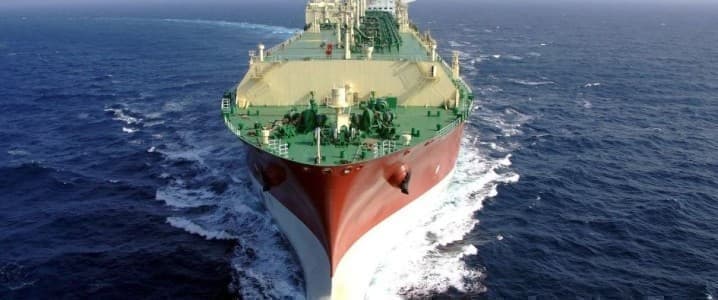Large volumes of new LNG supply are coming to the market this decade, but none of the huge export capacities currently under construction will make it in time to alleviate Europe’s tight gas market either in 2023 or 2024. The United States and Qatar, the world’s top exporters of LNG, will have a lot of new capacity after 2025, easing the potential supply crunch but unable to help Europe with a new wave of gas supply either for the next winter or the winter after that.
Demand destruction amid high prices could reduce LNG consumption in the short term in both Europe and Asia. But even in a weaker demand scenario, Europe will need a lot of LNG to replace all the Russian gas it will have lost after the end of this winter and to build up adequate inventories ahead of the 2023/2024 winter.
The problem is there isn’t much large-scale LNG supply coming either from the U.S. or Qatar until 2025. This leaves at least two years of a very tight global LNG market, during which Europe will scramble to import more and more non-Russian gas. High prices could be here to stay, at least for two more years.
In the meantime, Europe is making good progress in setting up floating storage regasification units (FSRUs) to import more LNG, and developers are using more floating LNG (FLNG) platforms to export the fuel. But those floating facilities have lower capacities than the huge onshore terminals which the top LNG exporters are currently building.
Massive U.S. LNG Projects Coming Online…after 2024
In the United States, three projects – Golden Pass LNG, Plaquemines LNG, and Corpus Christi Stage III – are currently under construction.
Once completed, those projects will expand U.S. LNG peak export capacity by a combined 5.7 billion cubic feet per day (Bcf/d) by 2025, the EIA said in September. Thus, peak export capacity in what is now the world’s largest exporter sending around 70% of its LNG to Europe would reach nearly 20 Bcf/d by 2025, up from around 14 Bcf/d now. The U.S. is currently exporting around 11 Bcf/d, with Freeport LNG out of service since June.
Related: Europe Gas Crisis Subsides: Trafigura
Venture Global’s $13.2-billion Plaquemines LNG reached final investment decision in May, and was the first project located in the United States to reach financial close since Venture Global’s Calcasieu Pass facility in August 2019. Venture Global already has in place 20-year Sales and Purchase Agreements for 80% of the full 20.0 MTPA project.
QatarEnergy and ExxonMobil, the developers of the Golden Pass LNG in Sabine Pass, Texas, said last month that the new LNG export facility was on track for 2024 startup. The companies announced they had agreed to independently market LNG produced at their joint venture. ExxonMobil will have the exclusive rights to market 30% of Golden Pass LNG volumes, while QatarEnergy Trading will market the remaining 70%.
Cheniere Energy, the top U.S. LNG exporter, made in June a FID for the Corpus Christi Stage 3 project, which is expected to “provide much-needed volumes to the global LNG market by the end of 2025,” Cheniere’s President and CEO Jack Fusco said.
Other projects could also receive positive FID in the coming months, considering the high export prices and expectations of continued LNG demand in Europe, which is looking to ditch Russian gas by 2027.
The race for LNG supply could give rise to a second wave of U.S. LNG projects, but new supply will take time to develop, Kateryna Filippenko, Principal Analyst, Global Gas Supply, at Wood Mackenzie, said earlier this year.
But much of this new LNG supply, including from projects that have taken FIDs in previous years, is likely to come only after 2026.
Until around 2026, “Europe will have to compete with Asia for the marginal LNG molecule to satisfy demand – just as it is right now,” Filippenko noted.
“Competition between Europe and Asia for limited LNG will be intense until a new supply wave arrives after 2026. Prices will inevitably remain elevated until then.”
World’s Largest LNG Expansion Project in Qatar Won’t Be Ready Until 2026
In Qatar, the world’s largest LNG expansion project is expected to start production only in the fourth quarter of 2025.
Until then, global long-term LNG contracts before 2026 are sold out, according to top importer Japan.
The near-term global LNG supply response is weak, but record prices are triggering investment in new supply projects, London-based consultancy Timera Energy said in an analysis last week.
“The challenge is that average project lead times are around 5 years,” according to the analysts.
New supply next year and in 2024 is very limited, reflecting the hiatus of FIDs at the end of the last decade in a lower price environment as well as general headwinds for capex investment in fossil fuel projects.
“Limited new liquefaction capacity until 2025 combined with a leap in European demand support the continuation of the current regime of higher and more volatile prices across the next 2 to 3 years,” Timera Energy said.
U.S. and Qatari projects will bring a substantial increase in new supply in 2025-2026. However, LNG market dynamics from 2025 will depend strongly on how global LNG demand evolves in the meantime, the consultancy noted.
By Tsvetana Paraskova for Oilprice.com
More Top Reads From Oilprice.com:
- Equinor To Develop Arctic Gas Project To Boost Exports To Europe
- Tokyo Governor Advises Citizens To Wear Turtlenecks To Stay Warm
- UK Oil And Gas Companies Face $24 Billion Well-Plugging Bill


















